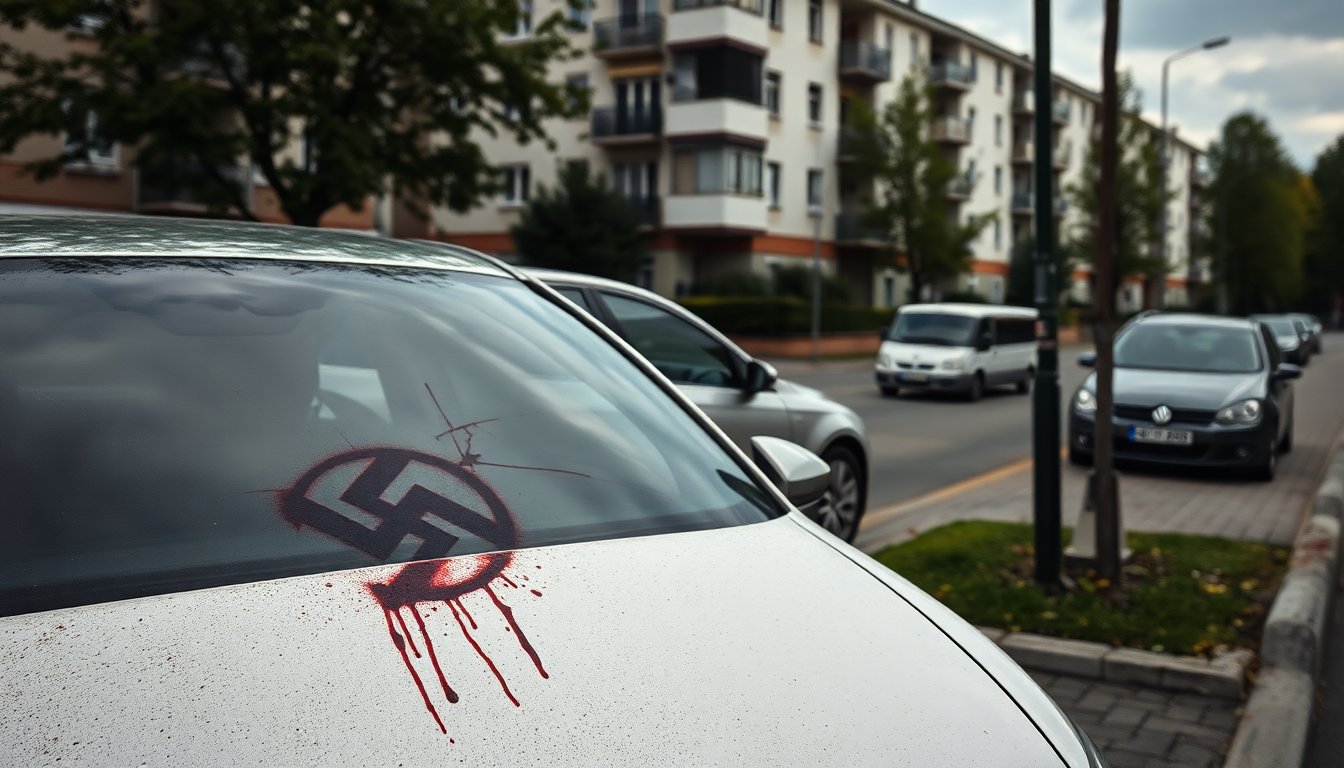Table of Contents
The western German city of Hanau is under investigation following a disturbing incident in which several cars and homes were defaced with Nazi symbols. The case is particularly alarming due to reports indicating that human blood was used to create these symbols, raising significant security and societal concerns.
The display of these symbols, which are strictly banned under German law, underscores a troubling trend of hate crimes affecting communities nationwide. As investigators pursue this case, the implications for public safety and community relations are becoming increasingly critical.
The context of hate symbols in Germany
Germany’s history with Nazi symbols is fraught. The use of swastikas and other Nazi insignia is illegal, representing a dark legacy of fascism and genocide. The nation has adopted stringent measures to prevent the display of these symbols and associated hate crimes.
Legal ramifications and societal impact
Under German law, public display of Nazi symbols can result in severe legal penalties, including fines and imprisonment. This legal framework reflects a commitment to ensuring the atrocities of World War II are remembered and that similar ideologies do not resurface in contemporary society.
The consequences of such actions extend beyond legal repercussions; they can also undermine community cohesion and instill fear among residents.
The use of blood in these acts heightens the severity of the crime. It serves as a stark reminder of the violence connected to these ideologies and can provoke intense emotional reactions from those who witness or learn about these incidents.
Community response and prevention efforts
The community’s reaction has been one of outrage and concern. Local leaders, activists, and citizens have voiced their dismay at the reemergence of such hate symbols. Community organizations are mobilizing, calling for heightened awareness and education regarding the dangers of hate speech and symbols.
Educational initiatives and support networks
In response to these incidents, various groups are developing educational programs that explore the history of the Nazi regime and the negative impact of hate symbols. These initiatives aim to promote understanding and tolerance among younger generations, ensuring that the lessons of the past endure. Support networks for victims of hate crimes are also being established, providing safe spaces for individuals to share their experiences and seek help.
The involvement of local authorities and community leaders is essential to these efforts. By collaborating with educational institutions, they can implement programs that emphasize the importance of diversity and the dangers of intolerance, reinforcing the message that hate has no place in society.
Looking ahead: the importance of vigilance
As the investigation in Hanau progresses, it serves as a reminder of the ongoing struggle against hate in all its forms. The emergence of blood-painted swastikas not only shocks but also calls for a unified response from individuals and communities to reject such ideologies. Vigilance is crucial to ensuring that history does not repeat itself and that future generations inherit a society free from hate.
Authorities are urging anyone with information about these incidents to come forward, stressing that community involvement is vital in combating hate crimes. Together, the citizens of Hanau and beyond must strive to uphold the values of respect and understanding, fostering an environment where diversity is celebrated and hate is unwelcome.





